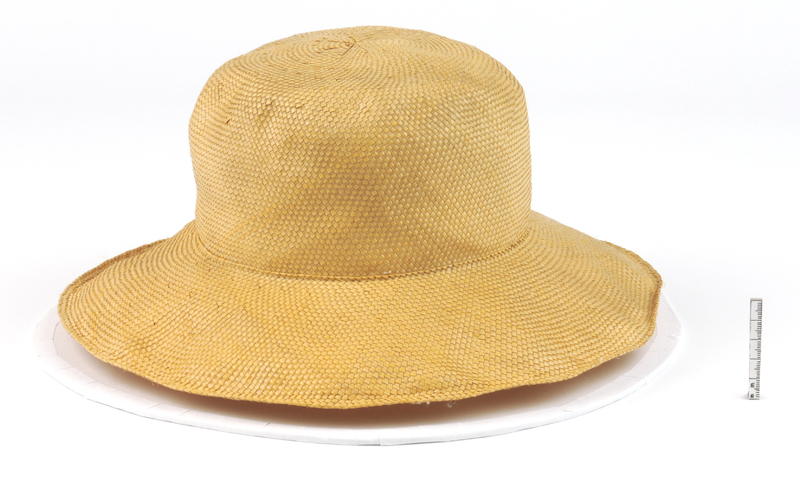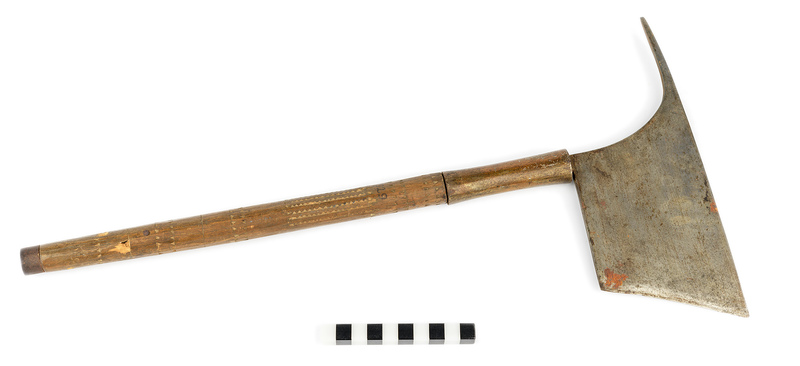Ethnographic Museum at the University of Zurich (Völkerkundemuseum der Universität Zürich)
The beginning of the Völkerkundemuseum der Universität Zürich lay in the collection of the Ethnographic Society of Zurich, founded in 1888. The first director, the medical doctor Otto Stoll (1849–1922), forged close ties with the university of Zurich early on, teaching ethnography, anthropology and geography. Today, the museum is part of the Department of Social Anthropology and Cultural Studies (ISEK). It hosts a collection of around 40,000 items belonging to the Canton of Zurich. The museum is co-signatory of the Heidelberger Erklärung / Heidelberg Statement of 2019 on decolonializing ethnographic museums in German speaking countries.
As an audience, the founders of the collection had two groups in mind: primary and high school students in Zurich, as well as individuals interested in commercial merchant interests. Companies and individual merchants from Zurich and the neighbouring industrial city of Winterthur were involved in a dense network active in Latin America, China, as well as in African and Asian colonial territories of the 19th century.
In South East Asia, a special focus of Swiss commercial activities were Singapore, Java and Sumatra, with a smaller presence in Manila. The main sectors of activity in South East Asia were merchant trading, risk insurance, plantations (mainly tobacco, rubber, coffee) for export and the import of Swiss textiles into the local markets. There were sizeable contingents of Swiss mercenaries active in Dutch colonial troops in what is today Indonesia up to the 19th century. Swiss researchers and travel writers can be found in colonial expeditions of different empires.
Among the early contributors to the Ethnographic Museum in Zurich, the botanist Hans Schinz (1858–1941) provided the collection he had acquired when he accompanied German colonialist Adolf Lüderitz on an expedition from 1884 to 1886 to the German colony of German South West Africa. The donor Alfred Ilg (1854–1916), on the other hand, served the Ethiopian king Menilek II for 26 years. The most important missionary enterprise of Swiss protestantism, the Basel Mission, also left its traces in the collection with the contribution of the missionary Gottlieb Spillmann (1834–1911), who had been working in Calicut in South India. More independent research was initiated and organized by the museum, notably by Alfred Steinmann, director of the Museum from 1941 it 1963; he had a special focus on Indonesia, especially Indonesian textiles. In 1971, under the director Lorenz G. Löffler, Ethnography was at last instituted as a Seminar at the University of Zurich. In 1979, the Museum was transferred from the university complex into the building of the former Botanical Institute in the historical Botanical Garden of Zurich.
The Philippine Objects
It is out of this early commercial network in South East Asia that came the collections of Philippine objects to the museum: The Sprüngli and the Labhardt-Lutz-collections. Both donations were applauded in the Feuilleton of the daily newspaper Neue Zürcher Zeitung of May 21, 1890. In 1917, a third small collection was added (Zimmermann/Zoller). All in all, the Philippine collection of the museum contains approximately 300 objects.
Emil Sprüngli (1851–1910), the first donor, entered the silk company of his uncle, G. Thomann-Bolleter as a young man. After his apprenticeship, he moved to Manila where he worked for the trading house Lutz & Cie. He later opened his own company. For 37 years, he moved between Zurich and Manila, living intermittently in both places. From 1888 to 1910, he acted as honorary consul for Switzerland in the Philippines.
Mathilde Labhart-Lutz, the second donor, was the widow of Johann Conrad Labhart . Her husband was born in Steckborn, canton of Thurgau, in 1825. In 1846, he took employment with the Swiss trading company Gebrüder Tobler & Co. in Manila. Two years later, he became partner of the newly named Eugster, Labhart & Co, which eventually split into Eugster&Co and Labhart &Co. He died in Manila in 1887.
Mathilde Labhart-Lutz is said to be the first Swiss woman to have settled in Manila. She died in Switzerland in 1911.
In his extensive obituary for J. C. Labhart, the Austrian scholar Ferdinand Blumentritt, close friend of José Rizal and other Filipino intellectuals of the burgeoning independence movement, stresses the eminent services to "our fatherland", that Labhart rendered to the Austro-Hungarian Empire as its longstanding Consul in the Philippines. Blumentritt calls Labhart an ingenious autodidact who published two articles in learned journals on Manila-hemp. From Labhart’s regular parcels with newspaper clippings and letters to Blumentritt, the latter writes on July 13, 1889:
"Ich kann ruhig sagen, dass in der ganzen langen Reihe von Jahren, in denen ich mich des Verkehrs mit dem verewigten Freunde erfreute, ich durch ihn durch die geringsten Vorfälle im Archipel mit Sofortigkeit und Treue unterrichtet wurde."
[It is due to say that I was informed of the smallest incidents on the archipelago immediately and truthfully in this long course of years that I have been communicating with the hereby immortalized friend. ] (Translated by author)
The presentation of these collections for Mapping Material Philippine Culture is a collaboration between the Ethnographic Museum at the University of Zurich and the association studiyo filipino.
Links:
History of the museum in English:
https://www.musethno.uzh.ch/en/About-us/history.html
Browse 17 Items in this collection.
Selected Items from This Collection
Share this
Facebook Twitter

